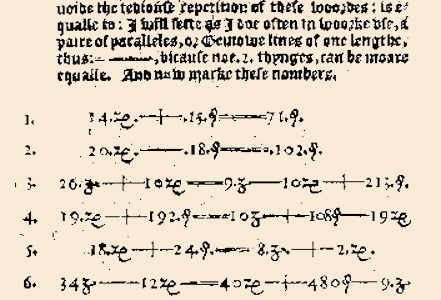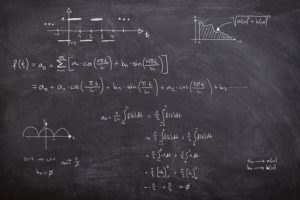
The equals sign, =
Robert Recorde (1510-58) was born in Tenby and, astonishingly, died in debtors’ prison, but he had had a glittering academic career at Oxford and Cambridge universities, studying both mathematics and medicine. In his notes he would write two parallel lines as his own shorthand for ‘is equals to’, reasoning that this is a graphic representation of two things that are exactly the same.
He decided to introduce this into his 1557 book, ‘The Whetstone of Witte’, which was the first book in English to use a range of algebraic symbols. His equals sign did not become universally accepted immediately, as there were several alternatives, but by the 1700s these had been completely discarded for the more elegant =. Recorde’s original version was quite wide, a style he applied to + and – as well, as can be seen in the image above.
Recorde’s simple innovation is perfect for its purpose. However, many students today are not taught its correct meaning and they automatically place it in front of each line in a stepped calculation. This inevitably leads to errors and omissions. Fortunately, there are those who do have a grasp…

(Top image: Wikimedia Commons / Public domain)
